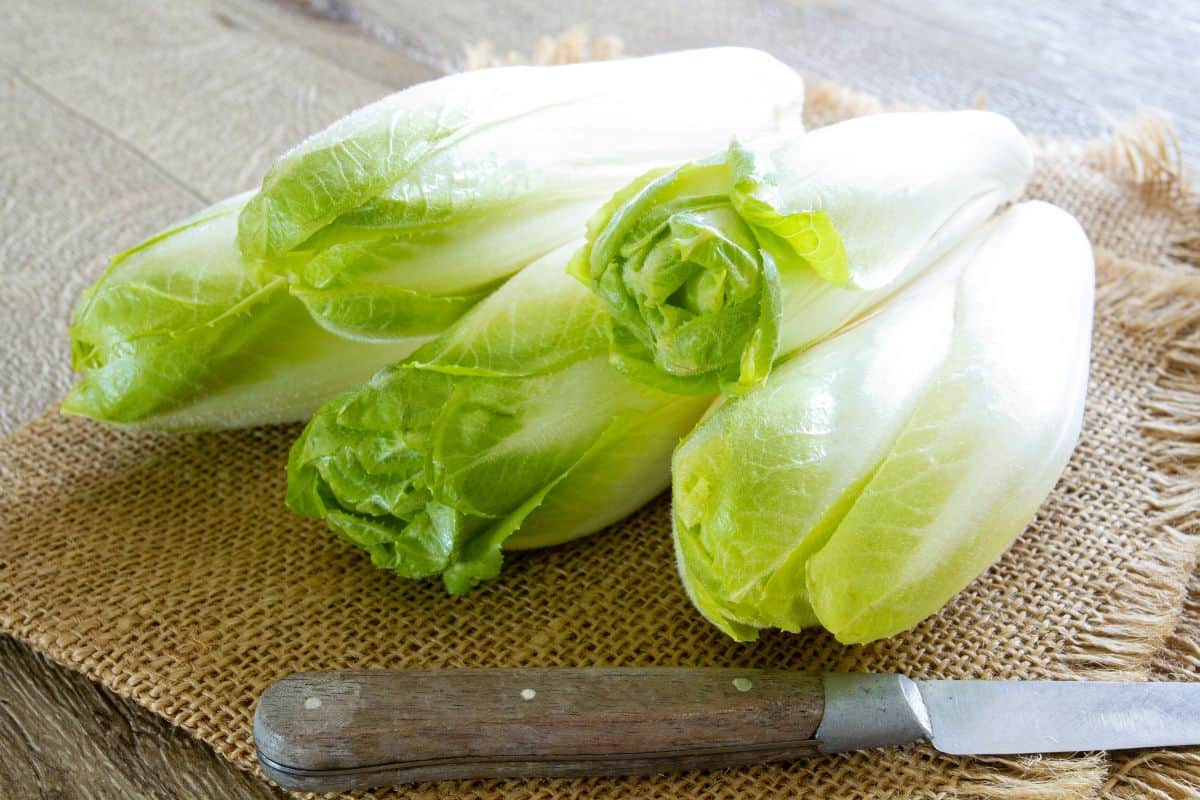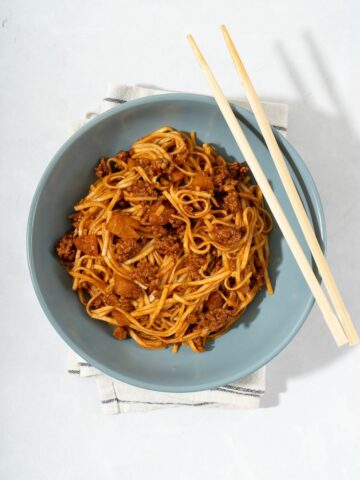Being a passionate Korean food lover, I’ve long been captivated by the adaptability of the napa cabbage in Korea and now abroad. This leafy vegetable is a fundamental ingredient in Korean cuisine and is incorporated into a diverse range of my favorite dishes, such as kimchi, dumplings, stir-fries, and other side dishes.
Nevertheless, there may be instances where napa cabbage is unavailable, or you feel the urge to experiment with something new. This is where knowing some napa cabbage substitutes can become helpful in keeping flexibility in your kitchen.
These Korean cabbage alternatives not only taste amazing but also provide numerous health benefits. From bok choy and savoy cabbage to kale and kohlrabi, there are many vegetables that can be used in place of napa cabbage. Below are around a dozen of the best picks, plus when to use or not use some of them.

Jump to:
🥬 Best Napa Cabbage Substitutes
Savoy Cabbage
In Korean cooking, savoy cabbage can make for an excellent replacement for napa cabbage. This cabbage has a mild yet distinct flavor and a crunchy texture, making it a versatile ingredient in various dishes.
As a member of the Brassica family, savoy cabbage shares similarities to napa cabbage in terms of shape and size but with crinkled leaves and a more delicate texture.
What sets savoy cabbage apart is its slightly sweeter taste, making it a desirable choice for those who prefer a milder taste. Savoy cabbage is also packed with nutrients, including vitamin C, vitamin K, and fiber, making it a healthy addition to any meal.

Bok Choy
This leafy green vegetable is a staple in Chinese cooking and offers a mild flavor that can complement multiple dishes. Its crunchy texture and subtle sweetness make it a perfect ingredient in Korean dishes.
Like other brassica vegetables, bok choy is also a great source of vitamins and minerals, including vitamin C, vitamin K, and calcium. The delicate texture of bok choy may result in a reduced cooking time when used as a substitute for napa cabbage, making it a fantastic choice for quick salads or stir-fries.

Endives
Endives can be an excellent substitute for Korean cabbage in fresh salads and stir-fries, thanks to their crunchy texture and slightly bitter taste. This vegetable has a stronger flavor than your typical napa cabbage, so it’s best to use fewer endive leaves or mix them with other milder greens to balance out the taste.
Despite their stronger taste, endives are a great addition to any dish, especially in Korean breakfast dishes. They're packed with nutrients such as fiber, vitamin C, and vitamin K and are best used in salads, stir-fries, and soups.

Red Cabbage
Red cabbage is an excellent alternative to Korean cabbage, especially if you're seeking a slightly sweeter taste and a more vibrant color. It's also a great source of vitamin C and antioxidants, so it’s a big plus for any dish needing more nutrition.
This type of cabbage is denser and has a tougher texture than napa cabbage. This means that it may take longer to cook and require more seasoning to enhance its flavor when used in your recipes.
Despite this, red cabbage can be a great addition to Korean dishes such as stir-fries, salads, and various types of kimchi.

Pointed Cabbage
Pointed cabbage is also known as hispi cabbage or sweetheart cabbage. It has a pointed shape and is smaller than regular green cabbage, which makes it an ideal ingredient for Korean dishes.
Compared to other forms of cabbage, pointed cabbage has a sweeter flavor and a more delicate texture. Although it has a slightly different flavor than napa cabbage, it's still an excellent option for soups, stir-fries, salads, and coleslaws.

Broccoli
This cruciferous vegetable is high in fiber, vitamin C, and vitamin K. Moreover, it has a similar texture to napa cabbage, which makes it an ideal replacement for Korean cabbage in many recipes.
To prepare it, cut off the tough stems and chop the florets into bite-sized pieces. You can use it raw in salads or slaws (especially the stems, cut into slivers), or lightly cook it and add it to stir-fries or soups. However, keep in mind that broccoli has a more pronounced flavor compared to napa cabbage, so use it sparingly.
If you're not a fan of the taste of broccoli, try blanching it before using it in your recipe. This will help to mellow out the flavor and make it milder without hurting the nutrient content.

Kale
Kale is also a member of the cabbage family, so it has a similar flavor profile to napa cabbage. It's a very healthy vegetable notoriously packed with vitamins and minerals, such as antioxidants and fiber.
Though it's much stronger than your usual cabbage, which is why you'll need to cook it longer to get it to the same texture. You can also massage the kale to help break down the tough fibers and make them more tender - and don't forget to remove the stems!

Choy Sum
This leafy green vegetable is commonly used in Chinese cuisine and has a slightly bitter taste that pairs well with savory dishes. Choy sum is a member of the brassica family and shares similarities with napa cabbage in terms of appearance and flavor.
However, it's a tad more delicate in texture and packed with nutrients, such as vitamin C, vitamin K, and fiber. In Korean cuisine, choy sum is used in stir-fries, soups, and salads to add a unique flavor and texture to the dish.
Choy sum is a bit softer, though, so it might not hold up as well in high-heat cooking methods like stir-fries. However, it can still make an excellent addition to soups, stews, and salads, where its delicate texture can shine.

Lettuce
Lettuce has always been a popular leafy green in numerous recipes as one of the many key ingredients. However it can also be used as a substitute for napa cabbage in certain dishes. There are many lettuce kinds to pick from, and each has a special flavor and texture.
One of the most popular varieties of lettuce is iceberg lettuce, which has a crunchy texture and a mild, slightly sweet flavor. Romaine lettuce is another popular lettuce variety in Korean cuisine, however; its crisp texture and mildly bitter flavor make it a perfect addition to stir-fries, slaws, and other recipes that call for a little more crunch.
Butter lettuce, also known as Bibb lettuce, is another fantastic option. It has a soft, buttery texture and a delicate flavor, making it an excellent ingredient in dishes that require a more subtle taste and texture, such as spring rolls and lettuce wraps.
Both romaine and butter lettuce are great sources of vitamins and minerals, including vitamin K, vitamin A, and folate. They're also one of the few healthy options that are low in calories and high in water content.

Brussels Sprouts
Brussels sprouts are an excellent substitute that are packed with nutrients and flavor. Taking their name from the capital of Belgium, these small, leafy green vegetables are a member of the cabbage family and are commonly used in a variety of dishes, including flank steak, vegetables, and even various Korean BBQ sides.
These veggies are also an excellent source of vitamin C, vitamin K, and fiber, so if you’re looking to boost your nutrient intake, these are just the sprouts. They also contain antioxidants and anti-inflammatory compounds that have been found to help reduce your risk of chronic diseases like cancer and heart disease.
To prepare Brussels sprouts, simply wash them and trim off any tough ends. You can then chop them into bite-sized pieces or roast them whole, depending on your preference.

Kohlrabi
Kohlrabi is a cruciferous vegetable that has a similar taste and texture to cabbage, so it’s a top-notch alternative in various dishes. This vegetable is an excellent option for those trying to keep a balanced diet because it's low in calories and high in fiber.
If you plan on using kohlrabi, you can prepare it in multiple ways - you can either shred it thinly and use it in salads or slaws, or you can chop it into small pieces and add it to stir-fries or soups.






Comments
No Comments